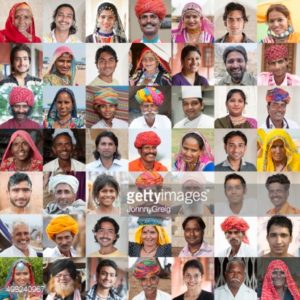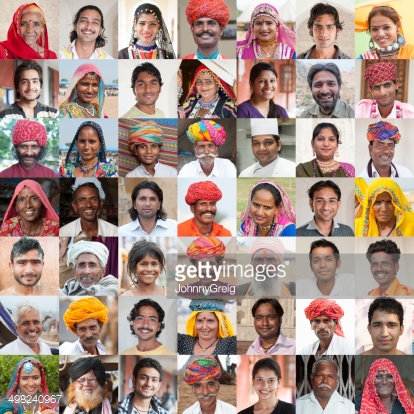Ethnic Dimensions of South Asia

Dr. Rajkumar Singh
Introduction
The terms ‘ethnic and ethnicity’ are used to include religious, racial, linguistic, tribal and similar divides which have been activated in the sociopolitical conflict in the present age. It is associated with a sense of identity arising from shared customs, language and culture, physical characteristics, and so on, and would appear to be far removed from the material categories of economic and social life. As a group in the modern political system, a conflict exists at the level of consciousness; but it is a reflection in consciousness of very real, concrete and material circumstances (David, 1996). In the modern world, there is a wealth of literature attempting to define and discuss ethnicity. Anthony D. Smith places ethnicity in the context of modernisation, and Cynthia Enloe examines the issue in the context of power and authority while John Saul looks at the problems of the tribe in relation imperialism and the modes of production debate. The ethnic conflicts have assumed significant proportions and have become an important feature of political life in the final quarter of this century. The scale, intensity, and persistence of these conflicts provide persuasive evidence that we are not dealing with these conflicts as fundamental determinants of history.
The first exposure in ethnic identity came from consciousness and material circumstances. Consciousness does not reflect material reality in some arbitrary way, and indeed a consciousness of ethnic identity can persist long after the real foundations that endangered it have withered away, or it can emerge in advance of the proper consolidation of an immanent identity. In general, the material circumstance that underlies an ethnic unit is illustrated by drawing attention to the periphery, or boundary of a socio–economic unit which possesses its internal structures or mode of production. Though ethnicity as a category in political conflict and the concomitant consciousness of identity are linked in this way to material life, yet slowly and tortuously, ethnicities disappear or become politically irrelevant (Magubane, 1979). For example, the Boers and the blacks of South Africa do not have even today co–habit the same material socio–economic entity, their physical transformations ultimately led them finally align itself with reality, but not until it has exhausted its own tortuous and extended life span. It’s natural outcome is ethnic war and negotiation processes.
Ethnic Violence
Ethnic war is large–scale violent incident entailing an organized and prolonged military engagement and confrontation between regular (government) forces and highly mobilized insurgent or militant group(s). There is continuity in fighting; military attacks/operations are extended over a considerable part of the country’s territory. Importantly, the warring parties and their grievances and goals are solely defined in ethnic terms. Whereas the government represents the dominant/majority ethnic group, civilians belonging to the minority/weaker ethnic community invariably constitute the insurgent or militant forces. Like regional wars, internal ethnic wars are dangerous, hostile events. Hostility does not develop in a vacuum or automatically, but stems from deep–rooted socio–economic and political grievances that can not be redressed by ordinary political means. In most cases, grievances are genuine and serious. Even ethnic fear of extinction does not always evolve itself in a direct form to become a major source of ethnic war (Sahadevan, 2006). A long history of denial of legitimacy to or lack of recognition of, a group’s identity in relation to its ethnic territoriality and its growing sense of relative deprivation–defined as a perceived gap between value expectations and value capabilities may initially appear to be a mere racial grievance but, in the long run, creates a fear of its extinction.
However, grievance–formation as a principal source of ethnic war is a dynamic process in which each ethnic group with seemingly different ethno–ideological and value structures try to consolidate and promote its identity and material interests from a threat or invalidating behavior of other groups. Ethnic war is deep–rooted in a situation, where one group’s core sense of self-interest is perceivably or in reality threatened by the demands of or denial by another group, thereby eliciting the former group’s defensive response. Ethnic wars are not fought over common issues or for limited goals. Fighting a war is fundamentally the decision of the concerned group in pursuit of its interests in that gains and losses are borne by its members. The warring parties belong to two different ethnic groups with strong identities based on clear historical antecedents, heritage, culture, language and religion but both of them form part of the same political system at least in the legal sense.
Ethnicity Today
Ethnicity has gained prominence in South Asian politics today for two additional reasons. First, the growth of sectarian political parties throughout the region has amplified and redirected ethnic issues to the political limelight. These parties have arisen, or have been resurrected by parochial interests, because of the government’s inadequacy or inability to remove ethnic grievances. These parties differ from national parties in that they have a narrow political base; represent the interests of only particular ethnic groups or segments thereof, and are dedicated to achieving political ends through violence. Second, the racial factor in South Asian politics is also sustained by the international role of the regional countries. For example, the Pakhtoonistan movement in the NWFP has been inspired and supported by the successive Afghan government and the Lanka–Tamil secessionist movement received full support from the neighboring Indian state Tamil Nadu (Bhargava, 1983). Likewise, the tribal in the Bangladesh CHT are deriving sustenance from the nearby Indian tribal movements in Mizoram, Tripura, and Manipur.
Particularly in the case of ethnicity in South Asia, the pursuit of colonial policies inevitably led to discrimination against certain ethnic groups which remained unresolved during that period. When the colonial masters withdrew, they did not leave behind them a society with a strong potential ruling class in place. The other side of the same coin is the economic backwardness and the weakness and distortion of the productive forces in these countries. Hence, the nature of the state in newly independent countries and its interaction with the class formation is unstable and tottering. Earlier, it was in the interest of the colonial authorities to encourage internal differentiation within the subject population. The positive impact of this policy was that the rich cultural diversities in the subcontinent were preserved and endangered, while its negative impact was that these gave rise to numerous parochial attachments. Although the national policies of the new ruling elites in post–independence period attempted to rectify historical anomalies or reorder political realities, it, however, only aggravated ethnic feelings or created new racial tension.
At-large the issue of ethnicity is closely related to nation–building and internal stability. Initially, the pattern of political development was on the line of Western notions of modernisation, and its leaders hoped that with the ongoing process of upgrading, parochial attachments would simply disappear. In the course of time and with the rapid expansion of communication and transportation networks, the ethnicity in the region has invalidated most of these assumptions associated with the national development process. As a result within each country, the separate cultural identities of regions, far from losing social significance and becoming blurred, have in fact reasserted their cultural/regional identities by politically mobilizing themselves to confront the state system which has failed to recognize or protect their interests. They have rejected the continued validity of national symbols and values and have redirected their allegiance to ethnic symbols and values to fight for greater influence within their societies (Hassan, 1985). In most cases, the discriminatory policies of the national leadership have made ethnic communities to rise above parochial attachments to form a unified political order.
In the context of ethnicity, instability is a condition in which the established political order is under challenge because of policies that directly and adversely affect certain ethnic interests. In extreme situations, this may lead to the partial disintegration of the polity while in less serious instances, primordial sentiments tend to reassert themselves. In the circumstances, the best that can be hoped for is to contain them (Enloe, 1973). But we must recognize the fact that often the primordial sentiments are not necessarily obstacles to internal stability; rather institutionalized discriminations that lead to ethnic cleavages are the actual causes of instability within a polity. To attain any measure of permanence in internal stability in political systems, structural changes and attitudinal changes are a must. The first fundamental change in this direction should be the restoration of a democratic set up where it is absent as in Pakistan and, where it is present, its redefinition such that the majority tyranny does not become the order of the day as has been the case of Bangladesh and Sri Lanka. Above all, a sense of fairness and justice must also prevail among those who exercise effective decision-making power, so that they are not perceived to represent the particular interests of a particular ethnic group. They must transcend narrow interests and formulate policy options that seek to benefit all groups within the polity.

